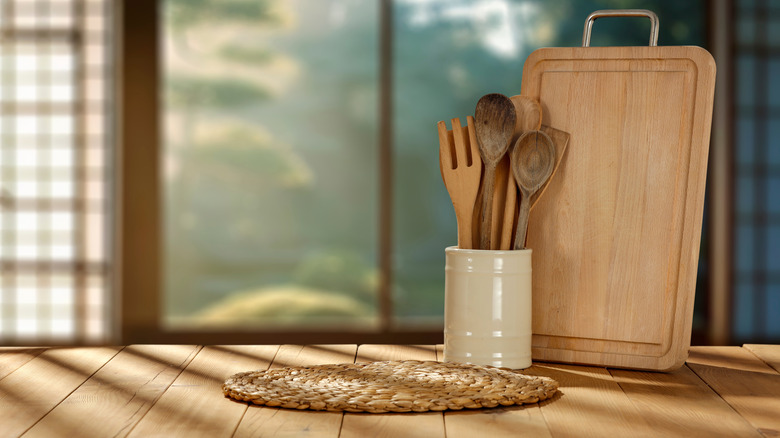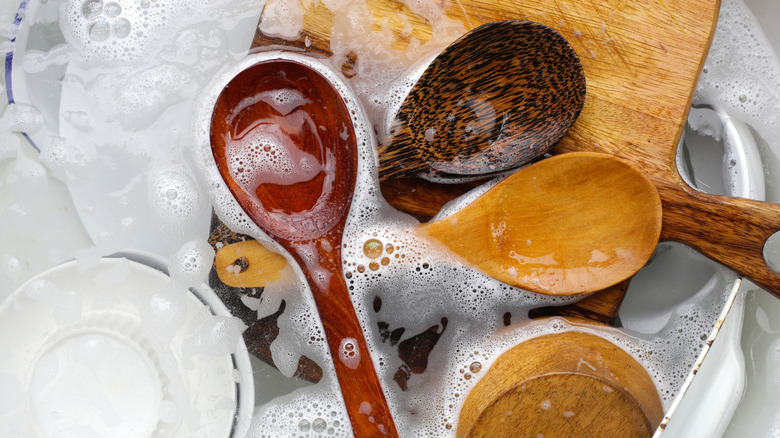The Best (And Only) Way To Clean Wooden Kitchen Utensils
Wooden utensils are one of the kitchen essentials that just make sense. They've been around for decades as a reliable tool that stands the test of time (when taken care of correctly). Further, they don't contain any harmful plastic byproducts, won't negatively react with foods you're cooking, and they look pretty dang beautiful and timeless. While these perks are undeniable, it's essential to know that there is a right and wrong way to care for them. Jessica Gonzalez, Chief Operating Officer of Sparkly Maid San Antonio gave us expert-level guidance on how to properly clean wooden utensils. Her main advice is that "the safest and most effective way of cleaning wood utensils is manually using warm water, mild dish soap, and a soft sponge."
The key is to lessen the utensil's exposure to water over long periods. For example, Gonzalez explains, "do not soak them for too long or wash them with an abrasive sponge as it would crease the surface." The same principle applies to dishwashers. While it's tempting to toss the dirty wooden spoon directly into the machine, it's best to avoid using one entirely. She shares that dishwashers provide "prolonged exposure to water and heat can make wooden cutlery crack, swell, or warp eventually." A final step that's critical to long-term usage: make sure you air dry the spoon or spatula immediately after washing. This reduces the risk of cracks or splitting as the utensils age.
How to keep wooden utensils fresh after washing
To get optimal longevity out of your wooden utensils, Gonzalez's tip to keep them in good shape is "... oiling them once a month with a food-safe mineral oil or a beeswax-and-oil compound designed specifically for cutting boards and utensils." This oil specifically "closes the grain, stops it from drying out and cracking, and gives it a thin coat of water resistance." Before applying any food-safe mineral oil, ensure the utensils are clean and completely dry so that it can thoroughly soak in.
Once properly cleaned, consider all the uses for wooden spoons! After all, they're versatile in terms of their applications. For example, the bottom of the spoon is perfect for making Italian Foccacia Pugliese, for consistent divots to let all of the olive oil and ingredients sink into the dough. It's also ideal for cooking the best basic tomato sauce because the wood doesn't alter the taste or interact with the acidic tomatoes. Pressing the long edge of the spoon's handle is another trick to flute a pie crust.
If you notice any lingering scent post-cooking these items, Gonzalez says to use "a half lemon and coarse salt rubbed on the surface can be used to eliminate odors and gently strip the surface stains without damaging the wood." For a double dose of odor reduction, grab a few pantry staples to clean food odors off wooden spoons, for a sparkling set of cookware that's like brand-new.


